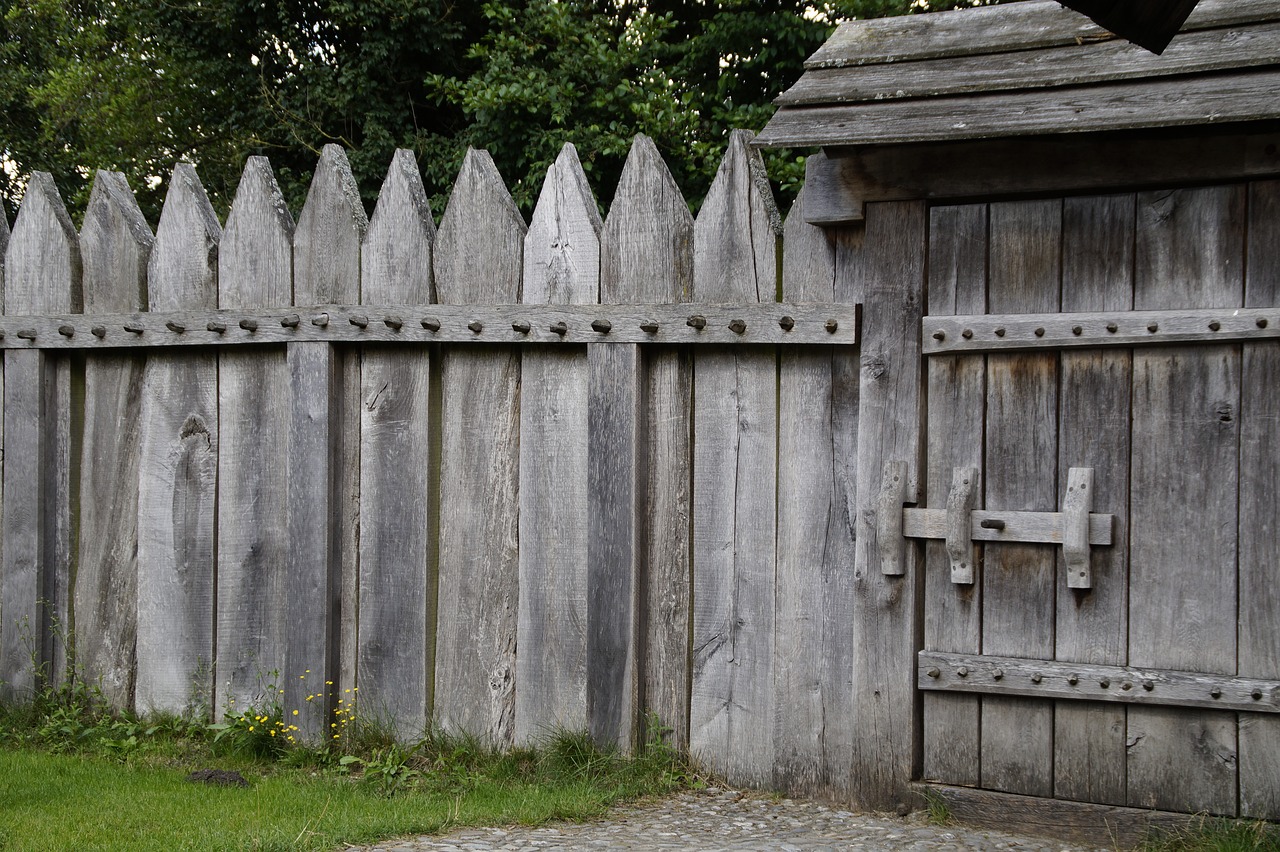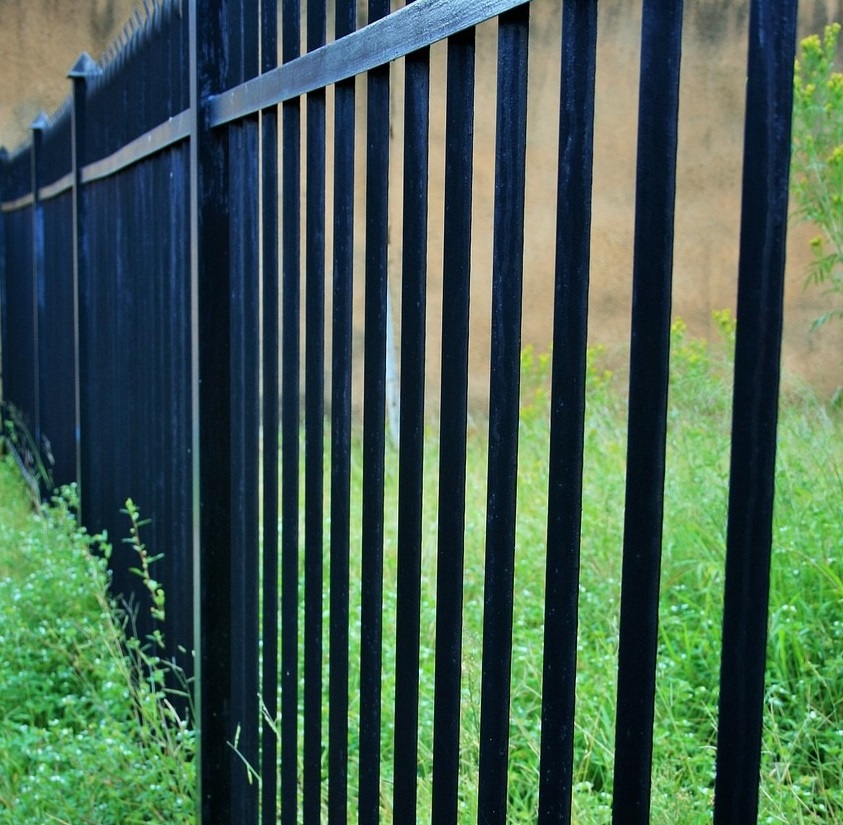Palisade

|
Contents |
[edit] Introduction
A palisade (derr. Latin ‘palus’ meaning stake) is a wall or fence typically comprising individual vertical elements bound together to form a sturdy barrier, usually for the purposes of creating a secure enclosure. Palisades are typically made from timber or metal stakes. The visual effect may be of a wall or fence, depending on whether there are gaps between the uprights.
[edit] Historical use
Historically, palisades were made from tree trunks arranged without gaps and rising up to 4m in height. The tops would usually be pointed like a pencil to create a more effective deterrent. They were quickly and easily built from materials that were often readily available. Because of this, a palisade might have been built as a temporary wall around a castle until a more permanent stone wall could be constructed.
Ancient Greek and Roman military camps would often be encircled by palisades, and such constructions were also common in medieval Germany and colonial America.
[edit] Modern variants

|
Wooden palisade fencing can resemble a traditional picket fence. However, contemporary palisades (pictured above) are just as likely to be made from steel, comprising slender uprights with gaps of less than 100mm between. They are very difficult to climb, provide high levels of security and damage resistance, and have proven popular for schools and on industrial sites.
A typical construction for galvanised steel palisade fences up to 3m high is to have two horizontal rails – an upper and lower – although for taller fences additional rails can be included at higher levels. The uprights (or ‘pales’) are typically fixed to the horizontal rails using galvanised bolts. Special uprights are set into shallow concrete pad foundations at intervals determined by the manufacturer’s specification.
Individual pales are available in various profiles such as W- or D-shaped with spiked heads to provide more effective deterrents.
[edit] Related articles on Designing Buildings
Featured articles and news
Government consultations for the summer of 2025
A year of Labour, past and present consultations on the environment, the built environment, training and tax.
CMA competitiveness probe of major housing developers
100 million affordable housing contributions committed with further consultation published.
Homes England supports Greencore Homes
42 new build affordable sustainable homes in Oxfordshire.
Zero carbon social housing: unlocking brownfield potential
Seven ZEDpod strategies for brownfield housing success.
CIOB report; a blueprint for SDGs and the built environment
Pairing the Sustainable Development Goals with projects.
Types, tests, standards and fires relating to external cladding
Brief descriptions with an extensive list of fires for review.
Latest Build UK Building Safety Regime explainer published
Key elements in one short, now updated document.
UKGBC launch the UK Climate Resilience Roadmap
First guidance of its kind on direct climate impacts for the built environment and how it can adapt.
CLC Health, Safety and Wellbeing Strategy 2025
Launched by the Minister for Industry to look at fatalities on site, improving mental health and other issues.
One of the most impressive Victorian architects. Book review.
Common Assessment Standard now with building safety
New CAS update now includes mandatory building safety questions.
RTPI leader to become new CIOB Chief Executive Officer
Dr Victoria Hills MRTPI, FICE to take over after Caroline Gumble’s departure.
Social and affordable housing, a long term plan for delivery
The “Delivering a Decade of Renewal for Social and Affordable Housing” strategy sets out future path.
A change to adoptive architecture
Effects of global weather warming on architectural detailing, material choice and human interaction.
The proposed publicly owned and backed subsidiary of Homes England, to facilitate new homes.
How big is the problem and what can we do to mitigate the effects?
Overheating guidance and tools for building designers
A number of cool guides to help with the heat.
The UK's Modern Industrial Strategy: A 10 year plan
Previous consultation criticism, current key elements and general support with some persisting reservations.
Building Safety Regulator reforms
New roles, new staff and a new fast track service pave the way for a single construction regulator.

























Comments
[edit] To make a comment about this article, click 'Add a comment' above. Separate your comments from any existing comments by inserting a horizontal line.